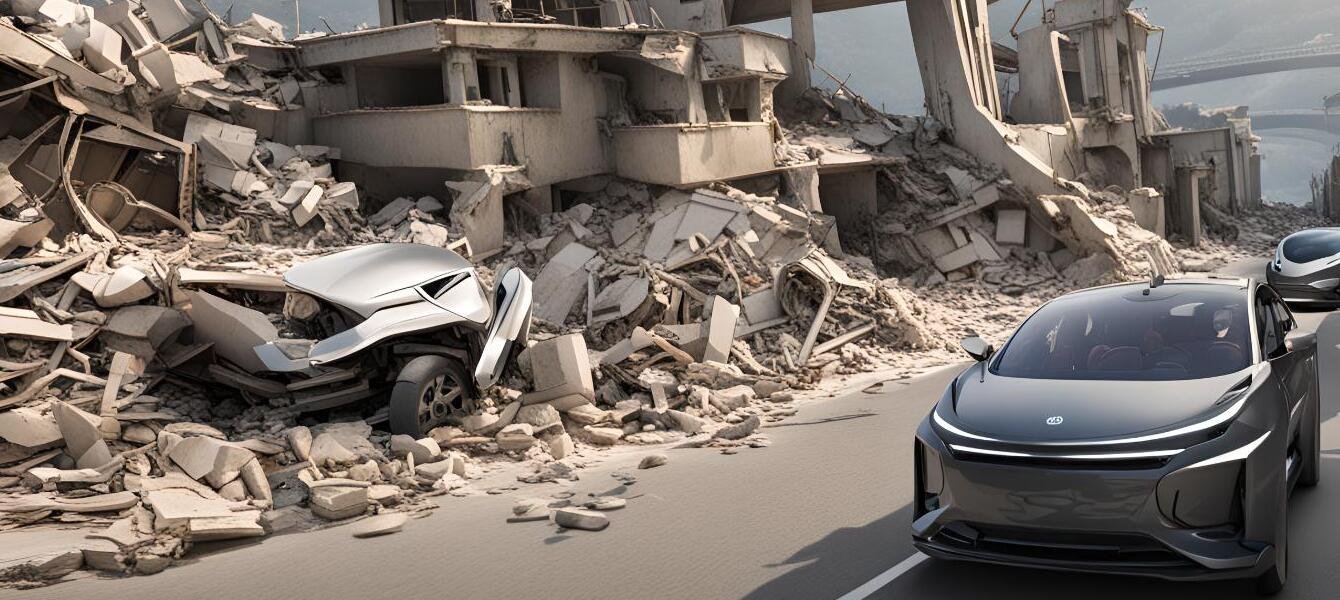Natural and human-made disasters have always posed significant challenges to societies. Floods, earthquakes, wildfires, and even nuclear threats are among the events that endanger the lives of thousands. Advanced technologies, such as autonomous vehicles and robots, have proven to play a critical role in reducing damage while improving the speed and precision of rescue operations. These technologies, powered by artificial intelligence, advanced sensors, and autonomous systems, not only enhance the efficiency of rescue teams but also protect responders from potential dangers.

-
The Role of Autonomous Vehicles in Crisis Management
Autonomous vehicles, due to their ability to operate independently without human drivers, can perform effectively in various critical situations. Equipped with sensors, cameras, and intelligent algorithms, these vehicles can analyze environmental conditions and provide essential rescue services.
- Support During Floods
- Transportation of Essential Equipment:
During floods, many roads become impassable. Autonomous vehicles equipped with LiDAR and GPS technology can identify safe routes and deliver vital supplies, such as water pumps, waterproof clothing, and food, to affected areas. - Evacuation of Affected Areas:
These vehicles can identify individuals trapped in flood-stricken regions and transport them to safety. Their ability to operate without human drivers enables them to navigate hazardous environments and reach locations deemed too dangerous for humans. - Emergency Communications:
In scenarios where communication infrastructure is destroyed, vehicles equipped with satellite internet can establish connections between affected individuals and rescue teams.
- Earthquake Relief Operations
- Transporting the Injured:
Autonomous ambulances can quickly and independently transfer injured individuals from collapsed areas to field hospitals. - Mapping of Affected Areas:
Using advanced technologies, these vehicles can survey damaged regions and generate precise maps for rescue teams. - Clearing Pathways:
Heavy-duty autonomous vehicles equipped with demolition tools can clear debris from blocked paths, allowing rescue teams access to critical areas.
- Wildfire Response
- Transporting Fire Suppression Materials:
Autonomous vehicles can deliver fire retardants or water to fire-stricken areas. Using mechanical arms, they can directly assist in extinguishing fires. - Creating Safe Routes:
By utilizing thermal sensors, these vehicles can identify high-risk areas and create safe evacuation routes for trapped individuals. - Environmental Analysis:
Vehicles equipped with smoke and temperature sensors can gather detailed information about the fire’s status and the surrounding environment to aid rescue teams.

- Assistance in Snowy Regions
- Rescuing Individuals:
Autonomous vehicles equipped with snow tires and elevated chassis can access areas where heavy snowfall has limited mobility. - Predicting Avalanche Risks:
Thermal sensors and LiDAR technology can forecast potential avalanches and relay necessary information to rescue teams. - Delivering Supplies:
These vehicles can transport heating equipment, medication, and food to individuals stranded in snowy regions.
The Role of Robots in Crisis Scenarios
Robots, particularly search-and-rescue robots and drones, are invaluable tools for navigating challenging terrains and analyzing environmental conditions during crises.
- Search and Rescue
- Exploration Robots:
These robots can access narrow and hazardous areas, such as beneath rubble or inside collapsed tunnels, to identify survivors using thermal sensors. - Drones:
Equipped with thermal and multi-spectral cameras, drones can survey affected areas from above and provide detailed data to rescue teams.
- Medical Assistance
- Rescue Robots:
Robots can deliver medicine, medical equipment, and first-aid supplies to injured individuals. In some cases, these robots are even capable of performing emergency surgeries. - Advanced Medical Systems:
Robots equipped with state-of-the-art tools can monitor vital signs and provide initial treatment to casualties.
- Debris Removal and Reconstruction
- Demolition Robots:
These robots can remove heavy debris and clear blocked pathways to facilitate rescue efforts. - Reconstruction Robots:
Industrial robots can rebuild damaged structures, such as bridges or buildings, restoring vital infrastructure in crisis-hit areas.
Integrating Autonomous Vehicles and Robots
One of the most effective strategies in crisis management is the integration of autonomous vehicles and robots. This collaboration significantly enhances the efficiency of rescue operations:
- Coordinated Networks:
Autonomous vehicles can serve as mobile bases, transporting robots to critical areas. - Data Collection:
Data gathered by vehicles and robots can be processed collectively and shared with rescue teams to optimize decision-making. - Accelerated Rescue Efforts:
The combination of drones and autonomous vehicles enables quicker and more accurate assessments of affected regions.
Challenges and Limitations
Despite their potential, autonomous vehicles and robots face certain challenges in crisis scenarios:
- Communication Disruptions:
In many cases, communication infrastructure may be destroyed. These tools must rely on satellite internet or independent communication systems. - Energy Consumption:
Autonomous vehicles and robots require sustainable energy sources, which may not be readily available in crisis-hit areas. - Unpredictable Conditions:
Crises often present unforeseen challenges that current software and sensors may struggle to handle effectively.
Future Innovations
To overcome these challenges and maximize their impact, future advancements in autonomous vehicles and robots must focus on:
- Integrating Artificial Intelligence:
Advanced algorithms can enable these tools to make more accurate and adaptive decisions. - Developing Modular Systems:
Vehicles and robots can be designed to accommodate interchangeable components tailored to specific crisis scenarios. - Building Autonomous Networks:
Creating interconnected systems that can independently share data between vehicles and robots for seamless collaboration.
Conclusion
Autonomous vehicles and robots have brought about a fundamental shift in crisis management. By reducing risks for rescue teams, enhancing the speed of operations, and introducing innovative solutions, these technologies play a vital role in saving lives. Investing in this field promises a safer and more resilient future for humanity.
For further insights into the role of autonomous vehicles and robots in crisis management and other related technologies, visit our website at highrock-car.com/en . Additionally, explore our article on cybersecurity solutions in this domain at the following link:
Cybersecurity in Smart and Autonomous Vehicles


